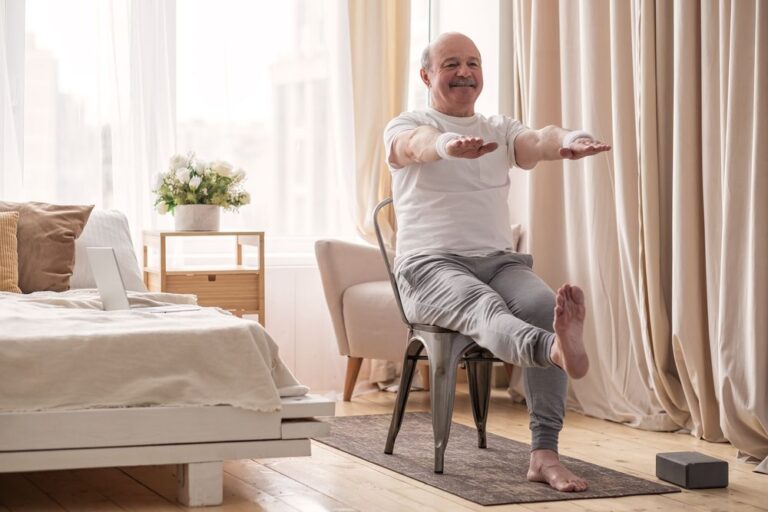The Fowler position is an essential technique in the care of bedridden patients. This position improves breathing, prevents complications and provides greater comfort to people who need to stay in bed for long periods. In addition, it offers different variations such as the semi-fowler position, which adapts to the specific needs of each patient according to the angle of inclination of the bed.
In this article, we will explore in detail what the Fowler position is, the different types of Fowler positions, its benefits for bedridden patients and how to apply it correctly. We will also address potential complications that could arise if proper measures are not used.
What is Fowler’s position?
The Fowler position consists of placing the patient on an inclined bed, with the torso elevated in a range of 30° to 90° depending on needs. It is widely used for:
- Facilitate breathing in patients with lung problems.
- Reduce pressure in certain areas of the body.
- Ensure better access to medical care.
Among the most common variants, we find:
- Fowler high (90 degrees): Torso completely upright.
- Fowler 45 degrees: An intermediate position.
- Semifowler (30 degrees): Softer and more relaxed.
The Fowler position is not only essential in the hospital setting, but is also useful in home care, helping to improve the quality of life of bedridden patients.
Fowler position types
There are different types of Fowler positions, depending on the angle of inclination of the bed. Each variation has its own benefits, depending on the patient’s needs:
- High Fowler position (90 degrees): In this position, the patient’s torso is completely elevated, making breathing easier and reducing the risk of aspiration. It is ideal for patients with severe respiratory problems or who need to be in an almost sitting position.
- Fowler position 45 degrees: In this case, the tilt angle is approximately 45 degrees. It is commonly used in patients with circulation problems or those who need an intermediate posture between horizontal and upright.
- Semi-Fowler position (30 degrees): With an angle of 30 degrees, this position is softer and more comfortable, and is indicated for patients who need rest but without the extreme inclination of the high Fowler position. It is useful in patients with mild breathing difficulties and in those who require less pressure on the back and hips.
Benefits of the Fowler position for bedridden patients
Fowler positions offer numerous benefits for bedridden patients:
- Improved breathing: Elevating the torso helps open the airways and reduce pressure on the lungs, making it easier to breathe, especially in patients with respiratory conditions such as asthma or pneumonia.
- Prevention of pressure ulcers: Alternating between different Fowler positionshelps distribute body weight more evenly, reducing pressure in areas prone to ulcers, such as the sacral area and heels.
- Comfort and Pain Relief: Bedridden patients may experience back and neck pain if kept in a rigid position. Fowler positions provide support and relief in these areas, allowing for a more comfortable posture.
- Better circulation: By changing your posture, the risk of circulatory problems, such as deep vein thrombosis, is reduced by improving blood flow.
How to apply the Fowler position correctly
Placing a patient in the Fowler position must be done carefully to ensure comfort and safety. Below, we offer you the basic steps to apply the Fowler and semi-Fowler position:
- Place the bed horizontally: Start by making sure the bed is horizontal to make it easier to adjust the tilt angle.
- Raise the back of the bed: Gradually raise the back of the bed until you reach the desired angle, either High Fowler (90 degrees) or semi Fowler (30 degrees).
- Adjust legs: If necessary, adjust the patient’s legs to maintain a comfortable angle, avoiding excessive pressure on the lower body.
- Check posture: Make sure the patient is properly aligned, with the neck and back in a natural posture. Adjust the pillow to ensure comfort.
Possible complications and special care
Although Fowler positions are very beneficial, it is important to consider some potential complications:
- Pressure ulcers in bedridden patients: Remaining too long in the same position can cause skin injuries. Change the patient’s position regularly.
- Neck or back pain: A poor angle adjustment or lack of support can cause discomfort. Always check body alignment.
Performing periodic evaluations and adjusting posture as necessary will reduce the risk of complications.
Differences between the Fowler position and the semi-Fowler position
The main difference between the fowler position and the semi-fowler position lies in the angle of inclination. While the high Fowler position (90 degrees) is used for patients who need to be in a completely upright posture, the semi-Fowler position (30 degrees) is more comfortable and less demanding on the body. Both options are useful depending on the patient’s needs.
Conclusion
The Fowler position and its variants, such as the semi-Fowler position, are indispensable tools in the care of bedridden patients. These postures not only improve breathing and prevent complications, but also contribute to the patient’s general well-being.
Knowing the benefits and appropriate ways to apply these techniques, caregivers of elderly people ensure optimal and safe care.






